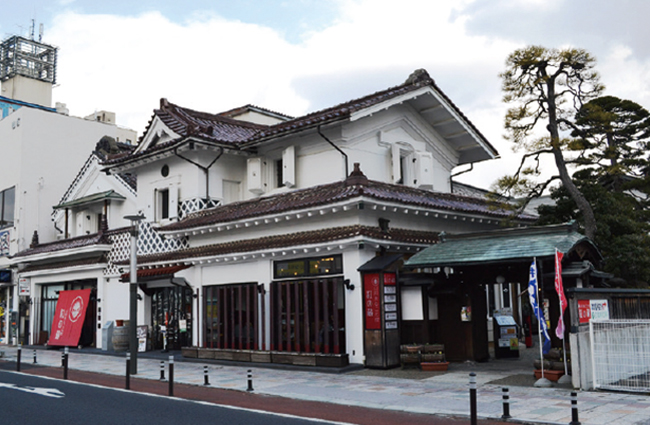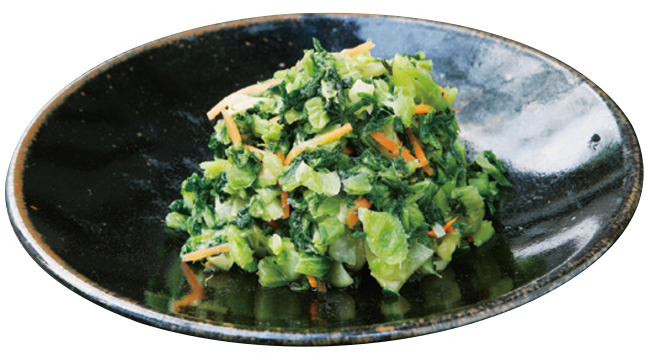Story
The ethos and wealth that merchants brought to Yamagata Prefecture

Benibana Byobu (“Safflower folding Screen”), a Yamagata Prefecture designated tangible cultural property, which was painted at the end of the Edo period (1603-1868) by Yamagata (then Murayama-gun, Dewa-no-Kuni) artist Aoyama Eiko. This important resource visually depicts a safflower production scene from the Edo period.
Heizan Enryaku-ji Temple, headquarters of the Tendai sect, is located in Old Omi Province, the “hometown” of Omi merchants.
The official name of Yama-dera Temple, a famous mountain temple representative of Yamagata Prefecture in the Tohoku region, is “Tendai-shu Hoju-san Risshaku-ji Temple”. The Hieizan Enryaku-ji Temple, which is the headquarters of the Tendai sect of Buddhism, is located in Old Omi Province, (now Otsu City, Shiga Prefecture) the “hometown” of Omi merchants. During the time of Mogami Yoshiaki(1546-1614), Lord of Yamagata Castle Risshaku-ji Temple was a powerful institution receiving a fief of 1,420 koku. The Omi merchants, who became wealthy through the safflower trade, also donated generously to support the temple.
When Jikaku Daishi was constructing Risshaku-ji Temple under the order of Emperor Seiwa, merchants donated some 380 hectares of temple land. Calculated in the Japanese measurement tsubo, this immense area is 1.14 million tsubo, and it can be imagined that it brought together quite a large number of monks and other people.
It would not be surprising if one of the means used to support the lives of some of these many people had been safflower cultivation, but unfortunately there are no extant records indicating that Jikaku Daishi brought safflower seeds to the region. However, as time progressed from the Warring States period (1467–1567) to the Edo period (1603–1868), it becomes possible to find records that infer a relationship between safflowers and the mountain temple. In particular, safflowers appear in a poem by the famous poet Matsuo Basho that he composed when travelling to Risshaku-ji Temple: Mayuhaki o / omokage ni shite / beni no hana (“Reminiscent of / a lady’s eyebrow brush / a safflower blossom”), and for varions reasons. such as that the neighboring area of Takase is a safflower producing area where morning mists often occur, the Risshaku-ji Temple area is dotted with sights reminiscent of those times.

Zashiki-gura (tatami-matted storehouses) unique to Yamagata where Kamigata (Osaka-Kyoto-Kobe) culture and Edo culture coexist
For Omi merchants, the mountain temple created by Jikaku Daishi is a powerfully attractive presence. Moreover, Lord Mogami Yoshiaki took action to entice business-savvy Omi merchants to Yamagata in order to boost trade with the Kamigata (Osaka-Kyoto-Kobe) region, dividing up land in the Yamagata Castle town (present-day Toka-machi – Nanuka-machi neighborhood) and enabling them to open shops, Together. the Omi merchants and local Yamagata merchants invigorated the safflower trade. The safflower merchants who built up wealth in this way continue even now to lead Yamagata’s economy, while changing the form of their business. Their legacy can also be seen in the townscape; in particular, the storehouses that remain in Yamagata City today exude a unique atmosphere where the zashiki-gura (tatami-matted storehouse) of Kamigata (Osaka-Kyoto-Kobe) culture, brought to Yamagata by the safflower trade, and Edo mise-gura (combined shop and dwelling) culture, brought to Yamagata along the Ushukaido highway, coexist. Moreover, the safflower trade has influenced the food culture of the region, with omizuke (Omi
-style pickles) playing an integral part in Yamagata home-cooking, as well as in imonikai parties, which are an autumn tradition in Yamagata.


